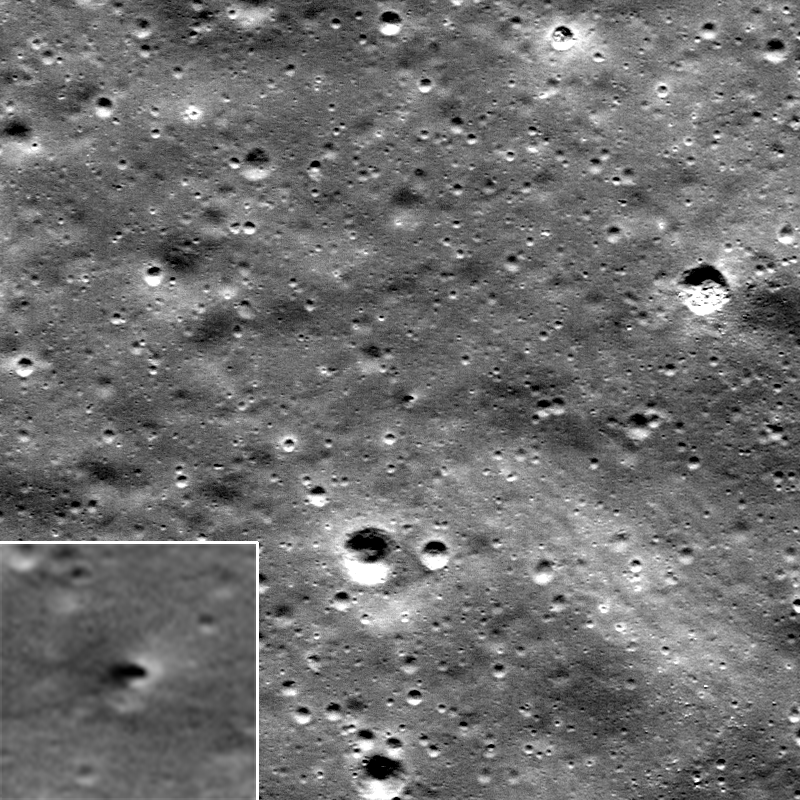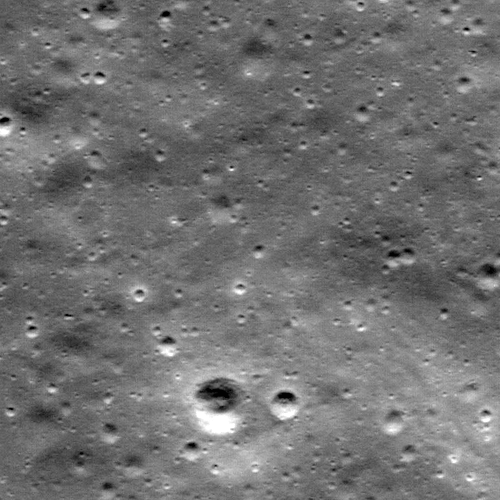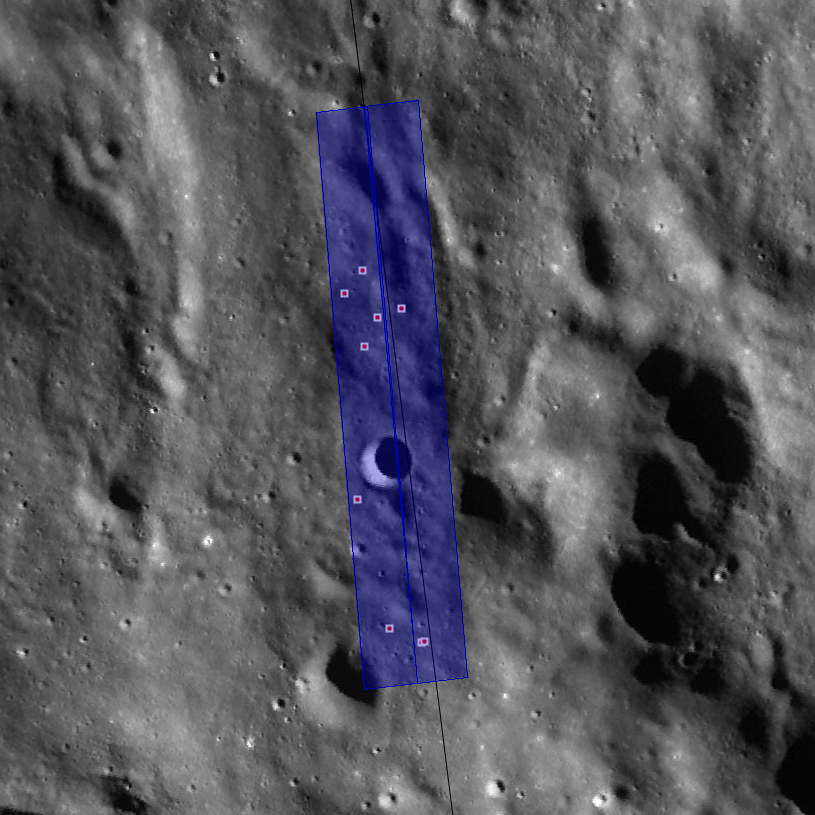
Impacts are the most important force shaping the surfaces of planets, moons, asteroids, and comets. In fact small asteroids and comets impact the Earth and Moon every day. On Earth, most of these small bolides burn up in the atmosphere and can be seen at night as meteors (aka shooting stars). Larger meteoroids hit the surface as fragments, or intact. Recall the recent meteor that exploded over Chelyabinsk Russia, and caused minor, yet widespread damage. That meteor was thought to be 15 to 20 meters in diameter before breaking up, fortunately the atmosphere absorbed most of the energy of that event. More recently in the news, a much smaller object was seen to impact the Moon on 17 March 2013. A team of Marshall Space Flight Center scientists photographed this bright flash (and many others), and then computed latitude and longitude coordinates.
The LROC team targets the coordinates of flashes for future observations in hopes of finding a newly formed crater. If an LROC NAC image of the impact area was acquired before the event, it is very likely that the crater can be found by comparing before and after images. If no pre-existing image exists then the task becomes nearly impossible because there are so many small, young impact craters on the Moon! So far the LROC team has found one crater associated with Marshall impact flash reports, certainly more will follow. However, the search is not limited to Marshall targets - in fact the LROC team has found over seventy potential new impact craters that formed since LRO went into orbit.
Why the adjective "potential" in front of "new impact craters"? What we are seeing in most cases are reflectance splotches, some low reflectance and some high reflectance. In only a handful of these observations can a crater be resolved. It is likely in the "other" cases that the crater is simply too small to be resolved in the NAC images, which have pixel sizes ranging from 50 cm to 150 cm. To pick out the crater you need to have at least three to five pixels, depending on lighting conditions. So craters need to be bigger than 1.5 meters (at best) to be resolved. So far, the largest new crater definitively identified in the NAC-to-NAC temporal comparisons is 7 meters (23 feet) in diameter.
In some cases, clusters of new splotches (craters) are seen in the NAC comparisons. What causes the clusters? Perhaps a bolide breaks up due to gravitational forces as it nears the surface? Or maybe these splotches are secondaries formed from a larger nearby primary impact? A search for new craters in the WAC has so far revealed no new larger parent crater, but the search continues.
A great advantage of a long-lived LRO mission is to make such temporal comparisons possible over a statistically significant percentage of the Moon. As the new observations are acquired, more and larger new impacts will be discovered. LROC will image the 17th of March Marshall flash target over the next several opportunities, thus covering the full area (the coordinates are only known to about the width of a NAC pair). If pre-existing NAC images of the impact site exist it should be easy to identify the ejecta in the post-flash image - and perhaps even resolve the crater. Stay tuned!
Closing thought: Similar to the GRAIL impact craters some of the "new" craters may exhibit a low reflectance ejecta blanket. Once again the mysterious Moon turns the table on conventional wisdom!
Related LROC Featured Images
New crater found NAC image compared to Apollo Pan image
LROC sees GRAIL impact sites!
Published by Mark Robinson on 20 May 2013


